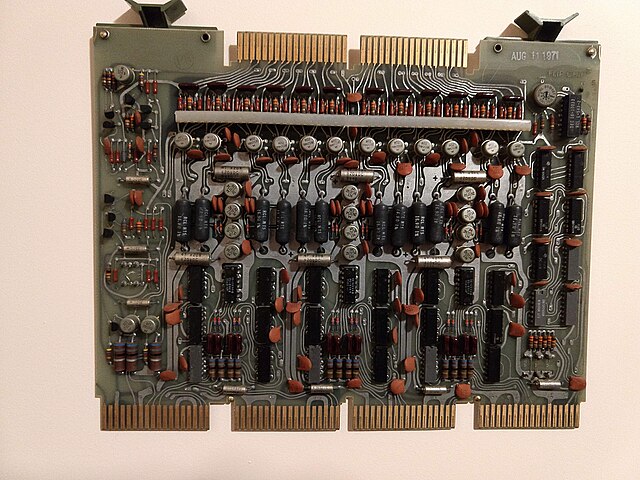Magnetic-core memory is a form of random-access computer memory. It predominated for roughly 20 years between 1955 and 1975, and is often just called core memory, or, informally, core.
A 32 × 32 core memory plane storing 1024 bits (or 128 bytes) of data. The small black rings at the intersections of the grid wires, organised in four squares, are the ferrite cores.
Project Whirlwind core memory
Close-up of a core plane. The distance between the rings is roughly 1 mm (0.04 in). The green horizontal wires are X; the Y wires are dull brown and vertical, toward the back. The sense wires are diagonal, colored orange, and the inhibit wires are vertical twisted pairs.
One of three inter-connected modules that make up an Omnibus-based (PDP 8/e/f/m) PDP-8 core memory plane.
Computer memory stores information, such as data and programs, for immediate use in the computer. The term memory is often synonymous with the terms RAM, main memory or primary storage. Archaic synonyms for main memory include core and store.
DDR4 SDRAM module. As of 2021[update], over 90 percent of computer memory used in PCs and servers was of this type.
Electromechanical memory used in the IBM 602, an early punch multiplying calculator
Detail of the back of a section of ENIAC, showing vacuum tubes
Williams tube used as memory in the IAS computer c. 1951





![DDR4 SDRAM module. As of 2021[update], over 90 percent of computer memory used in PCs and servers was of this type.](https://upload.wikimedia.org/wikipedia/commons/thumb/6/6c/RAM_Module_%28SDRAM-DDR4%29.jpg/640px-RAM_Module_%28SDRAM-DDR4%29.jpg)


